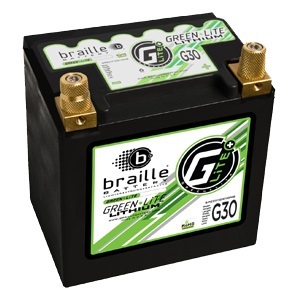With all the talk surrounding the rising popularity of EV’s, it’s certainly no coincidence that there’s been a great deal of progress in battery technology in recent years, particularly those of the lithium-ion variety. Literally millions are in use today, powering a wide variety of devices including cell phones, laptop computers, cordless power tools, and medical equipment. Lightweight and powerful, they have also proven beneficial to the racing contingent.
Developed through extensive research in the 1970’s and 1980’s, Sony released the first commercially available lithium-ion battery in 1991. While they proved effective in powering portable electronic devices and power tools due to their superior power-to-weight ratio, their high cost was a big concern to consumers at the time.
Fortunately, advancements in technology coupled with decreased manufacturing costs helped reduce the price. Add to the fact that since they are critically linked to the future of EV’s, economists are predicting that costs of the units could eventually be cut in half by 2025.
They are not only substantially lighter than their lead-acid counterparts but also offer significantly added longevity, improved reliability, and more sustainable voltage. Gary Savage, technical representative for Braille Battery states that “when you can cut weight by 2/3 to 3/4, while being able to start faster and add more reliability, it’s certainly beneficial.” Racers in particular are drawn to them due to the significant weight advantage.
The popularly-used Braille Battery model B3121 AGM (Absorbed Glass Mat) sealed lead-acid battery, for example, weighs in at 21 lbs., while its lithium-ion counterpart, the Braille GreenLite G30, features identical external dimensions and comes in at just 5.5 lbs., resulting in a weight savings of over 15 lbs. This can be truly significant for racing applications that are in dire need of reduced curb weight or improved weight distribution, particularly if the battery must be mounted in the stock location due to class rules.

Another key advantage is the fact that lithium-ion batteries deliver higher voltage during both cranking and discharge than comparable lead-acid units. This results in more voltage that is fed to the starter, ignition, and other critical electrical system components. The voltage is also more stable than what a conventional battery offers, resulting in improved engine management and data logging performance.
Users can expect improved reliability as well. Braille has offered 12- and 16-volt lithium-ion batteries to the racing market since 2009 and boasts an unheard of .5% failure rate out of 10,000 units, according to Savage. Yet another bonus is the fact that they don’t self-discharge over time as long as they are disconnected, eliminating the need for periodic charging when the vehicle is idle or in storage for extended periods.
Lithium-ion batteries can even sit idle for over a year, while maintaining a 90% charge and over 13 volts available to start the vehicle. When under heavy load, such as a drag car that is cooled between rounds using an electric water pump, a lithium-ion battery can be fully charged up to five times faster than traditional types.
Although they cost significantly more than comparable lead-acid units, the added expense is offset by their extended lifespan. While a lead-acid battery may provide a service life of several years, a lithium-ion unit can typically deliver a 8-10 year lifespan with proper care, according to Savage. Sharing one similarity with their sealed lead-acid AGM counterparts, lithium-ion batteries may also be mounted in any position whether right side up, on their side or even upside down, if desired. Braille Battery, Anti-Gravity Batteries, and Lithium Pros are highly regarded sources for 12- and 16-volt lithium-ion batteries to the high-performance industry.
Not unlike any other innovation, lithium-ion batteries have experienced their share of “growing pains”, particularly since they have become so widely used and a part of our everyday lives. There have been quite a few well publicized instances of hoverboard, cell phone, and laptop fires where a lithium-ion battery was found to be the cause. Tesla autos and Boeing passenger jets have been subject as well.
Most instances of fires were found to be caused by batteries that went into “thermal runaway”, a condition where the unit is damaged or overheats and becomes subject to rupturing, exploding, or becoming the source of a fire. Savage relates that the vast majority of these incidents involve consumer-grade batteries, which are of significantly lower quality and differing construction than high-quality automotive grade units.
Savage says that the high-performance automotive-grade lithium-ion batteries produced today feature integrated battery management systems that help maximize battery safety. The system monitors the unit for high or low voltage, overload, short circuit, and overheating, thereby protecting it and the vehicle, and providing an extra measure of safety.
Following purchase, proper care and maintenance are important to ensure maximum safety and longevity. It’s important that the user employs a manufacturer-recommended charger that is specifically designed for use with lithium-ion batteries.
While a quality lithium-ion battery may cost a bit more up front than a comparable lead-acid unit, their many benefits outweigh the initial purchase price.